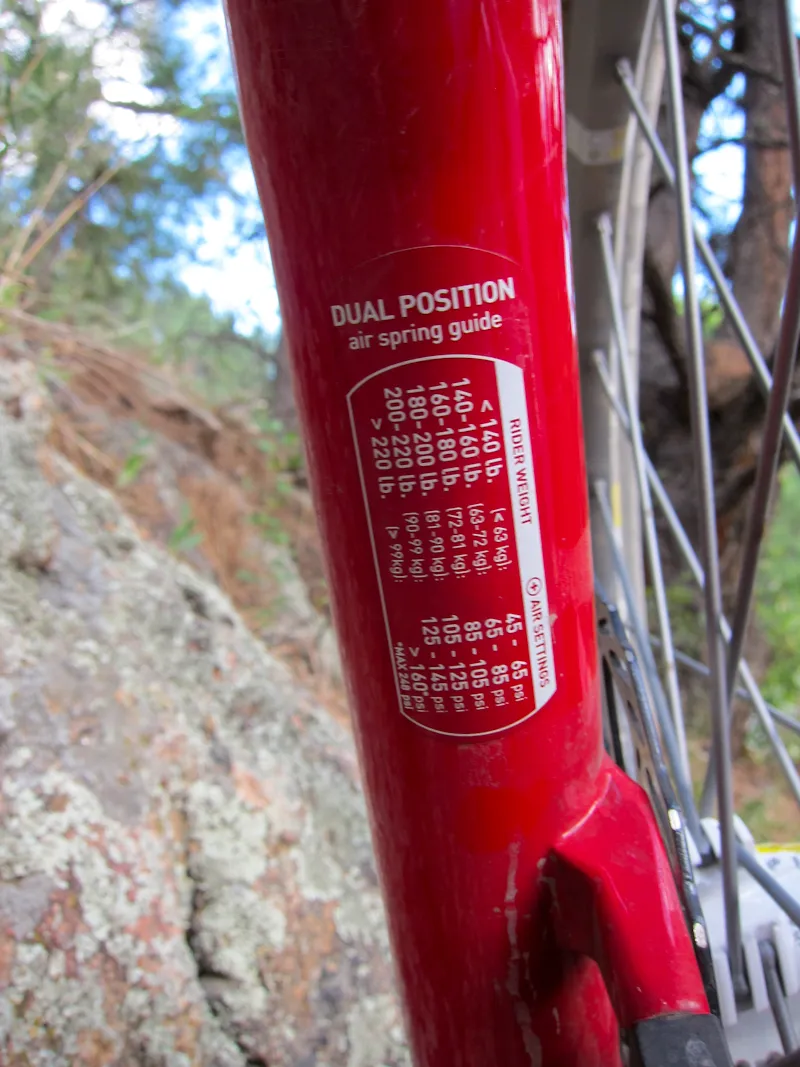RockShox couldn’t have timed it better when they sent a 2012 Lyrik DPA our way. With just enough time to install it the day before heading up to Colorado's Winter Park for the Trestle All-Mountain Enduro race, we had a full weekend of perfect testing conditions to get a feel for their latest fork.
The biggest change from 2011’s Lyrik is the Dual Position option, which was only available on the Revelation in this year’s line. Available in both air- and coil-sprung versions, this feature drops fork travel down approximately 30mm from full travel, allowing for a much friendlier climbing geometry.
Just like last year’s fork, the 2012 Lyrik will continue to come with a Boxxer-style Mission Control DH damper. And borrowing more from its big brother for the upcoming year, the new Lyrik gets Boxxer compression controls up top, too.
Out of the box with an uncut, tapered steerer and Maxle Lite axle, our fork weighed in at 4.9lb (2223g). Setup was straightforward and painless, with detented compression and rebound controls that are marked with tuning directions.
Spring load setup was a breeze too, with a single Schrader valve up top and no negative chamber to mess with down below. The Lyrik also comes with a trio of tools to set sag; anodized sag percentage marks on the right stanchion, a travel/sag-measuring band, and the familiar RockShox Air Spring Guide decal on the back of the left-side lower.

On top of the left leg sits the Dual Position travel switch and air valve
With five stages of enduro racing and a full day of race course pre-running under our belt, it’s safe to say the Lyrik DPA is impressive right out of the box. Conditions ranged from dry and dusty to wet and slippery, and phenomenally tacky; none of which affected the fork’s performance. Tuning adjustments had a noticeable effect on the fork's performance, and came in handy for tuning it to each specific course.
The 160mm Lyrik DPA’s combination of a 35mm chassis with a 20mm Maxle Lite didn’t show any noticeable sign of flex or recoil through any of Winter Park’s trails. Granted, the courses weren’t any more difficult than intermediate-level, but a few overshot drops and undershot jumps inspired more confidence than hesitation with the new Lyrik.
Compression felt somewhat progressive with proper air pressure, and still allowed full travel on larger hits without a harsh bottom-out. Actuation was shy of buttery, but consistent in all the above-mentioned conditions, and by no means was stiction an issue; it simply felt like the fork was still breaking in a bit. Short-travel mode didn’t seem to change the feel of the spring rate at all, and behaved just as predictably as long-travel mode did.
Overall, the 2012 Lyrik seems nicely updated from last year. We’ll see how it holds up over the long-term, but our first impression is that this is a very versatile 160/130mm fork capable of shining in several arenas, especially weighing in at just under 5lb. Pricing is still to be announced.

There's no word yet on pricing, but performance of the new Lyrik is excellent






